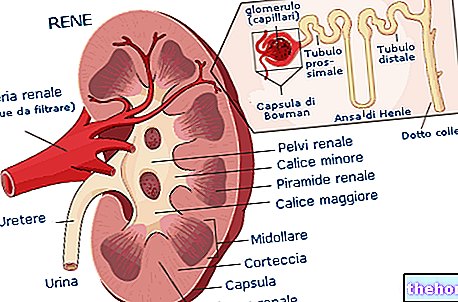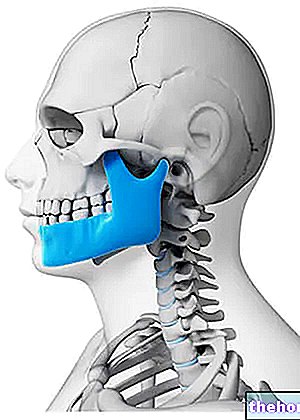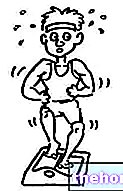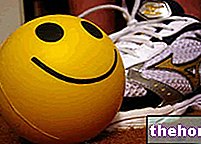Edited by Dr. Stefano Casali
Aerobic metabolism
This name is reserved for the complex of reactions of the electron transport chain and for oxidative phosphorylation. In a certain sense, this term in itself is misleading, as oxygen does not participate directly in the synthesis of ATP; however, it is precisely the availability of oxygen, at the end of the respiratory chain, that determines the individual's ability to sustain a high aerobic metabolism. .
Oxidative reactions are by far the most important processes for energy purposes, due to the large amount of energy that can be developed from the oxidative degradation of the body's caloric stores (fats, carbohydrates). The maximum power that can be developed by the organism on the basis of oxidative processes alone is not imposed, within certain limits, by the availability of the fuel, but rather by the comburent, that is, by the maximum possible supply of oxygen to the muscles (VO2max). work intensity range The oxygen consumption (VO2), reached 3 to 5 minutes after starting work, is an increasing function of work intensity. Under these conditions the work can be continued for quite long periods (over 10 minutes) without any further significant increase in VO2. These conditions are traditionally considered aerobic and the VO2 reached 3 to 5 minutes after starting work is defined as the "Steady State" (VO2S) value.
Maximum Aerobic Power (VO2max)
The amount of oxygen that the body has to take is regulated by the cellular metabolic level.
Basal metabolism: minimum quantity necessary to satisfy vital needs;
Maximum Oxygen Consumption: maximum individual limit that the body can express on the basis of oxidative metabolic processes. It is expressed in Absolute Value (L / min) or in relation to body weight (mL / kg / min) or Lean Mass (mL / kg lean mass / min).
RECRUITMENT AND TRANSPORT OF OXYGEN
The intake and transport of oxygen from the external environment to the internal environment of the cells requires the following:
- Dell "respiratory system (gas exchanges with the outside);
- Blood (for its hemoglobin content, which is the carrier of O2, and for its other physical and chemical characteristics);
- Dell "cardio-circulatory system (transport of gases and materials that can be used for energy purposes; adaptation of circulation to the general and local needs of the body);
It also depends on:
from the anatomical, physiological and biochemical characteristics of the structures of the effector organs, elements that influence the gaseous exchanges between cells and blood capillaries.
Factors limiting maximum aerobic power (in the presence of an excess of oxidative substrate)
Pulmonary factors:
- Alveolar ventilation;
- Diffusion capacity of respiratory gases, in particular of O2.
Blood factors:
- Transport capacity of O2 and CO2 by the blood.
Cardiocirculatory factors
- Cardiac jet, Q;
- Peripheral circulation, especially muscular circulation, Qm.
Tissue factors
- The diffusion capacity of the O2 from the capillaries to the cell and vice versa, of the CO2 from the cell to the blood;
- Ability to use O2 by tissues.
Maximum aerobic power: the sedentary subject
VO2 max can be expressed as an absolute value (L / min) or relative to body weight (mL / kg / min). The data concerning healthy adults vary between 40-50 mL / kg / min, as for the influences of sex there is a significant difference between males and females, these have an absolute value (L / min) on average 30% lower than to that of males. The difference between the sexes tends to vanish (3-4%) when the value refers to (lean) muscle mass; this indicates that the lower aerobic power of women is not only due to the lower body mass but also to the higher percentage of fat. The residual difference of 3-4% can be explained by a different hemoglobin concentration of the blood, which in the female is 5-10% lower than that of the male.
Maximum aerobic power: the Athlete
The maximum limit of VO2 max seems to be around 90 mL / kg / min; the athletes characterized by the highest values are cross-country skiers, regardless of the specialty practiced (skiing, running or cycling). However, regardless of the discipline practiced, the value of VO2 max, expressed per unit of body weight, appears significantly higher in the athlete than in the sedentary subject. A significant difference is found between the values found between athletes practicing different specializations. For example, the VO2 max of marathoners, expressed in absolute values, is lower than that of rowers, who on average are characterized by a greater body mass. Rowers do not use energy to transport their body, which is supported by water through the tool. sports, so they do not have to do any work against gravity (body weight does not come into play as a factor limiting performance). The runner, on the other hand, since he does almost all the work against gravity, requires a "high energy performance per kg of body weight and does not necessarily have high absolute values. The cyclist is in an intermediate situation depending on whether the route is carried out. on the flat or uphill.
Physiological basis for high aerobic power
The Maximum Cardiac Throw (Q "max) is the fundamental requirement to be able to achieve a high level of VO2 max; it can reach 40L / min in the athlete, against a value of 22-25 L / min in the sedentary and in the non-athlete. Other important variables are those connected to the maximum utilization coefficient of oxygen in the muscle which can reach values close to 0.9 in the muscle of the trained athlete, this is probably thanks to:
to a more uniform distribution of perfusion resulting from an increase (+ 20%) of the section surface of the capillaries per unit of muscle surface;
to an increase in the activity of some mitochondrial enzymes, particularly of succinodehydrogenase (SDH) also in relation to the different proportion between slow and fast muscle fibers.
Other articles on "The aerobic system"
- Oxygen debt
- VO2max test
- Indirect Maximum Oxygen Consumption Tests

.jpg)














.jpg)











